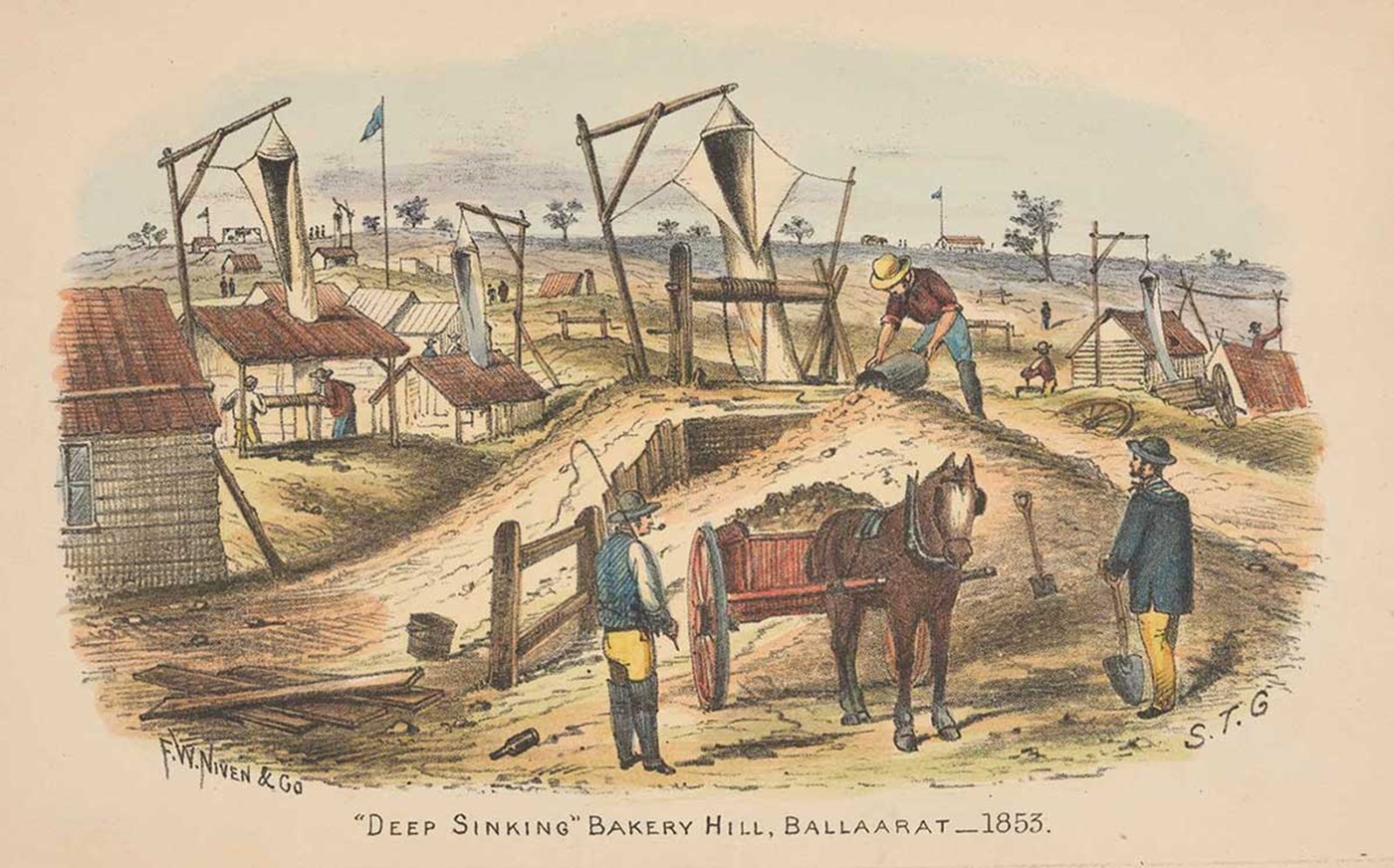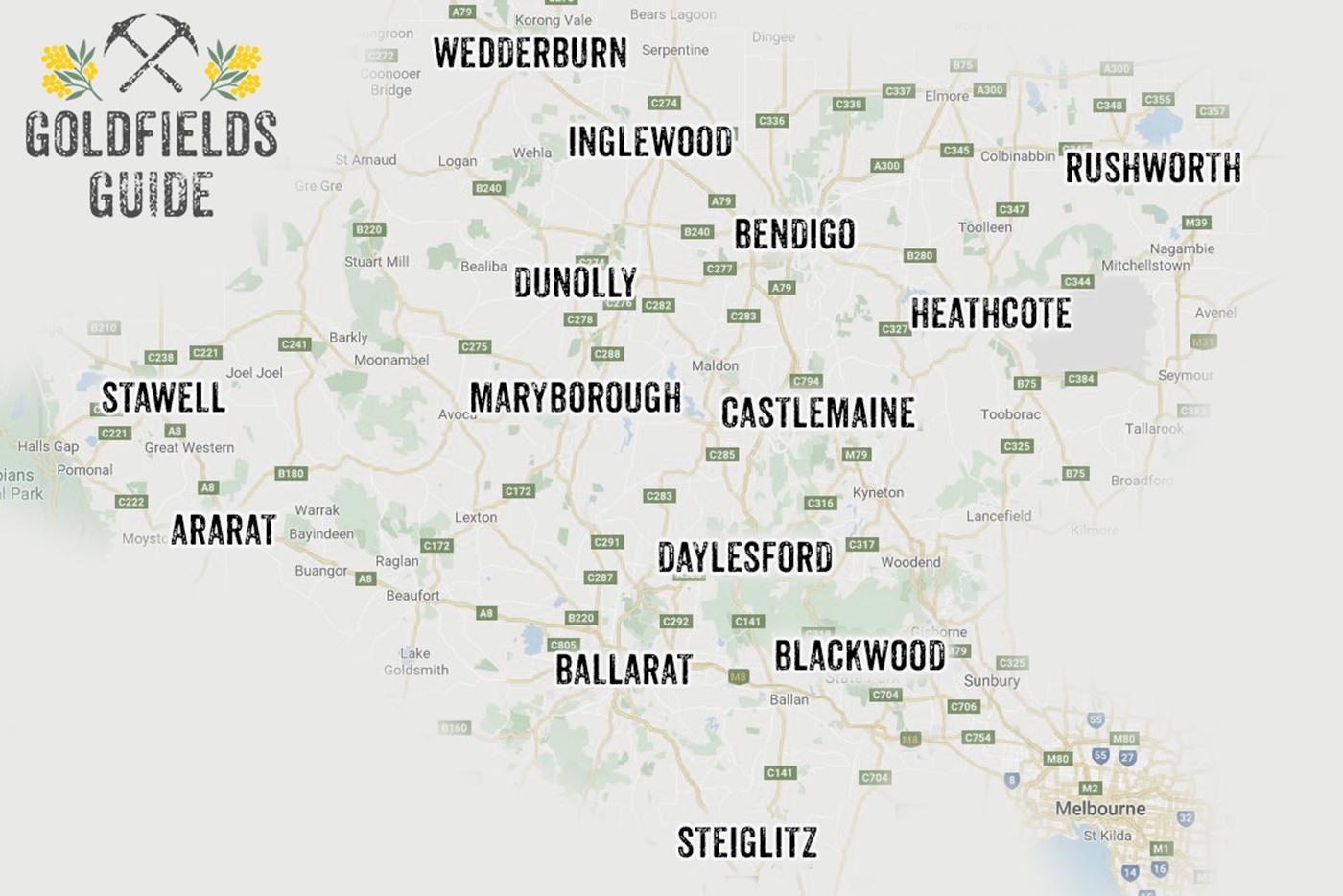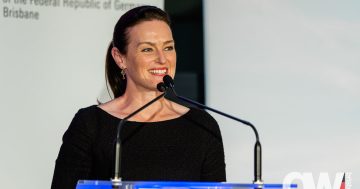
A drawing of gold mining in Ballarat in 1853. Image: National Museum of Australia.
The Victorian Goldfields have been added to Australia’s World Heritage Tentative List, a formal step on the state’s bid to have the Goldfields given World Heritage status.
A joint federal and state release says the Goldfields are home to the most extensive and best surviving goldrush landscapes in the world, and that World Heritage status would celebrate the history, culture, and heritage of Victoria’s goldrush era.
The Goldfields cover more than 20 per cent of Victoria, and are considered the most extensive and best surviving goldrush landscapes in the world.
Six key areas have been included in the tentative list submission, with the possibility of more areas being added as the nomination is developed.
These areas include the Bendigo Historic Urban Landscape, the Castlemaine Goldfields and Historic Townships, Creswick and the Deep Lead Landscape, Great Nuggets Historic Landscape (Tarnagulla, Moliagul, and Dunolly), Lalgambuk (Mt Franklin), and Walhalla Alpine Mining Landscape.
Tourism to the region reportedly generates more than $1.8 billion each year to the state’s economy. The release says, if World Heritage status is granted, it is expected to attract an additional 2.2 million visitors within a decade.
Other Australian World Heritage sites include Victoria’s Budj Bim Cultural Landscape, Uluru-Kata Tjuta National Park in the NT, and the Sydney Opera House.
Premier of Victoria and Member for Bendigo East Jacinta Allan said the Goldfields stood as a living testament to those who came to Victoria, seeking a better life and how they transformed the state.
“From the historic streets of Bendigo to the grand buildings of Castlemaine and the untouched mining landscapes of Walhalla,” she said.
“World Heritage sites are on bucket lists of tourists worldwide, and our historic Goldfields are on their way to be right there among them – helping to draw in more visitors from all corners of the globe and inject millions into our regional economies.”

A map of the Victorian Goldfields which covers more than 20 per cent of the state. Image: Victorian Goldfields.
Federal Minister for the Environment and Water Tanya Plibersek said the Victorian Goldfields told so many stories.
“Of waves of immigration. Of building beautiful towns from a harsh landscape, that have stood the test of time,” she said.
“Of the local First Nations people who cared for and tended the land for tens of thousands of years. It is the most extensive, coherent and best-surviving goldrush landscape in the world.
“It deserves to be celebrated and protected,” she added. “Just like the unique landscapes of Cape York, the deep history of Murujuga, or the mining towns of South Australia, our government is supporting a diverse range of truly special places to be recognised on the world stage.
“Australia is home to some of the most spectacular places in the world. These places tell our unique story. We want to better protect those places so they can be enjoyed by our kids and grandkids. International recognition protects our heritage and attracts visitors from all over the world.”



